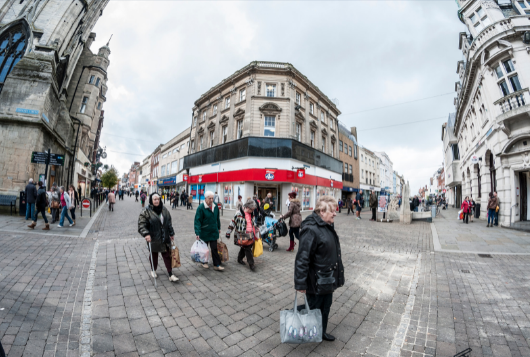Table of Contents
What Is the Bounce Back Loan Scheme? (BBLS)
The Bounce Back Loan Scheme (BBLS) was created to help small and medium enterprises who had been affected by the Coronavirus and wanted to borrow around £2,000 to £50,000. The government-insured the loan 100 per cent, but the customer was still responsible for the total loan amount. Before relying on the government guarantee, banks will attempt to recover the entire outstanding balance of the loan from the Borrower.
The British Business Bank manages the Bounce Back Loan Scheme on behalf of the Secretary of State for Business, Energy and Industrial Strategy, and with his financial backing (BEIS). The United Kingdom’s government (including the Secretary of State) does not promote lenders who partake in the Bounce Back Loan Scheme (BBLS), and the Scheme’s existence should not be taken as the Government’s support or warranty of HSBC UK Bank.
The loan should be utilised to support commercial activity in the United Kingdom. The highest amount of assistance that can be offered under the Business Interruption Payment guidelines is €800,000, with some restrictions in particular sectors.
Debts owed thereunder Bounce Back Loan Scheme, as well as any Top-Up loans, were not subject to the usual consumer protections that apply to business lending, so you will not be entitled to the protection and remedies provided by the Financial Services and Markets Act 2000 and the Consumer Credit Act 1974.

HSBC Business Bounce Back Loan
The Bounce Back Loan and any Top-Up loan you got are provided by HSBC UK as part of the Country Government’s Bounce Back Loan Scheme (the Scheme), which implies that they have agreed with the UK Government to:
1. Present you with accurate, fair, and non-misleading information about your loan; 2.
2. Analyse your repayment history and, if you appear to be having difficulty making payments, take necessary action in accordance with their duties under the Scheme.
3. If they discover or have reason to think that you are vulnerable after you have taken out the loan, they will examine (and, where appropriate, discuss further with you) what actions they can follow to achieve and your needs are met.
4. They will not charge you any fees (including on default) or default interest on the loan, yet we may impose interest at a rate of 2.5 per cent per year if a loan is not repaid as required until it is returned.
5. You can pay off the loan quickly at any moment.
6. Provide you with:
- Details of any missing payments, what they imply to you, and what you can do to fix it, including timeframes and the effect (if any) on subsequent payments.
- Details on what they could do if you don’t pay back your loan before they take action.
- The aid and assistance alternatives accessible to you, including free independent advice sources
- A yearly statement detailing your loan’s transactions as well as how much you still owe.
7. During the period of your loan, you will receive timely, clear, and adequate information that will help you to understand where you have fallen behind on your payments:
- The amount that was missed
- What could be done to fix the problem, and when can it be done?
- The effect on future repayments (if any).

Consequences of Missing Payments
- We may choose to cancel all or part of the loan, as well as our responsibilities to you under it.
- Demand prompt repayment of all monies owed to us under the loan, or declare that the loan, in whole or in part, is due and payable.
However, they will provide you advance warning and the opportunity to correct the problem (unless it cannot be repaired) before taking any of these steps.
If you don’t make your timely payments, they may give credit reference bureaus information about you and the status of your loan which may make it more difficult for you to borrow in future.
You don’t have to make repayments from the same bank account, and you don’t have to keep an HSBC account open for the duration of the loan. You can make installments from a bank account at a different bank (subject to usual transaction checks).
HSBC Bounce Back Loan Delays
“We’ve been overwhelmed with requests to open accounts as one of the few banks allowing applications from firms that aren’t currently our customers,” HSBC stated. As a result, new account wait times are much greater than they were before to Covid- 19. We continue to urge firms to apply for a loan through their current bank if at all possible, as this would be far faster.”
Many people who applied very early in the process have heard nothing even after many phone calls and numerous emails were told to reapply again.
HSBC notes that it has processed around 145,000 bounce-back loan requests to date and that some of them may be problematic since they were not done properly and require manual review. Because of the way the government established the bounce-back loan scheme, firms receive their facility offer letter after a few days of applying from a non-HSBC address, which may have ended up in the garbage folder. Business customers should examine their spam folders, according to HSBC.

HSBC Bounce Back Loan Processing Time
Consumers are encouraged to accept the service offer email from HSBC, as some customers may believe that all they have to do now is sit back and wait for funds to get deposited in their account. After a customer accepts the terms of this facility invitation letter, funds will be received within 48 hours.
You ought to be fine. It normally takes two working days to receive funds, although it can take a little longer. Your money should arrive at any moment, with a fair possibility of arriving within a day or a week. Take a seat and wait; you’re almost there. It takes two business days on average.
Conclusion
BBLS was a governmental effort for smaller companies around the United Kingdom that were hit by COVID-19. Via this program, British SMEs & micro-firms have been able to acquire loans somewhere between £2,000 – £50,000.
With the 100 percent assurance of the debt, the state offered suppliers. The guarantee enables providers, owing to the COVIOD-19 influence on the operations, to contribute to firms that may not otherwise be qualified for a loan.


